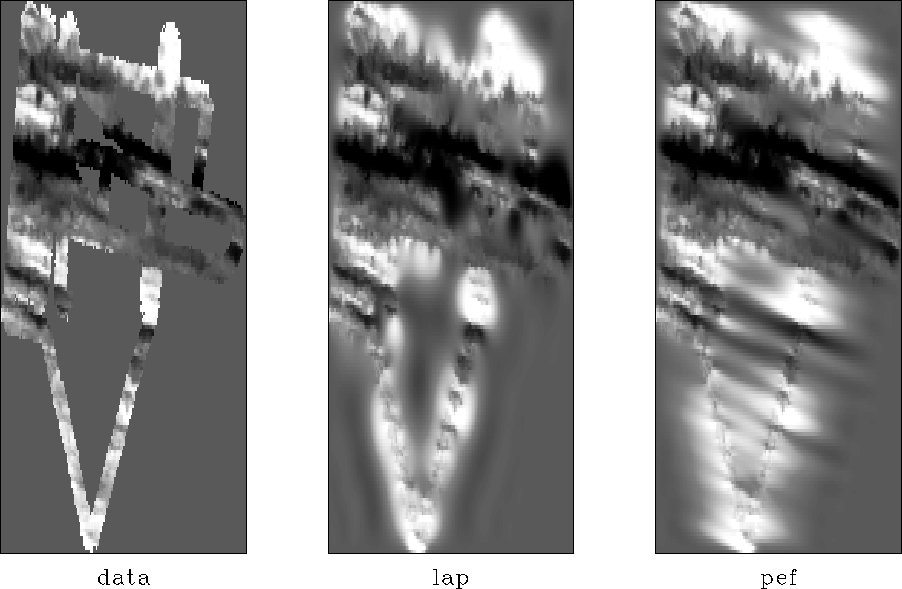




Next: Discussion
Up: Schwab & Schroeder: Algebraic
Previous: Solver
Jest is designed for complex, large-scale problems.
To hint at the problems we had in mind when designing Jest,
Figure 2 shows the result of a medium-sized
missing data estimation Claerbout (1994).
The estimation almost exclusively involves tools
used in the deconvolution example above.
seabeam
Figure 2
Estimation of missing bathymetry data.
The image in the left panel is
the bathymetry data collected by a side-scan sonar
along a vessel's path across the Pacific mid-ocean ridge.
The image in the center panel
shows an estimation of the missing data
based on the convolution with a Laplacian.
The image in the right panel
shows an estimation by a two-stage linear
prediction-error filter technique.





The panel on the left shows bathymetry (water depth) measurements  above the mid-ocean ridge in the Pacific.
The measurements were taken by a side-scan sonar hanging off the bottom of
a ship.
The vessel's path did not cover the entire image area and
consequently we attempt to estimate the missing data.
The masking operator
above the mid-ocean ridge in the Pacific.
The measurements were taken by a side-scan sonar hanging off the bottom of
a ship.
The vessel's path did not cover the entire image area and
consequently we attempt to estimate the missing data.
The masking operator  extracts the known data,
extracts the known data,
 from the total data set
from the total data set  .
.
The solution in the center panel
minimizes the output of the Laplace operator applied to
the data  ,
,
 ,
under the constraint that
the known data does not change,
,
under the constraint that
the known data does not change,
 .
.
The solution in the right panel
uses a two stage prediction-error technique.
First,
we minimize the convolution  to estimate the prediction-error filter
to estimate the prediction-error filter  .
Next, we replace the Laplacian in the earlier formulation
by the prediction-error filter and solve again for the missing data.
The missing data estimation
is easily built from a combination of
the objects shown in the deconvolution example,
a specialized prediction-error filter class,
and the mask operator
.
Next, we replace the Laplacian in the earlier formulation
by the prediction-error filter and solve again for the missing data.
The missing data estimation
is easily built from a combination of
the objects shown in the deconvolution example,
a specialized prediction-error filter class,
and the mask operator  .
.





Next: Discussion
Up: Schwab & Schroeder: Algebraic
Previous: Solver
Stanford Exploration Project
3/8/1999
